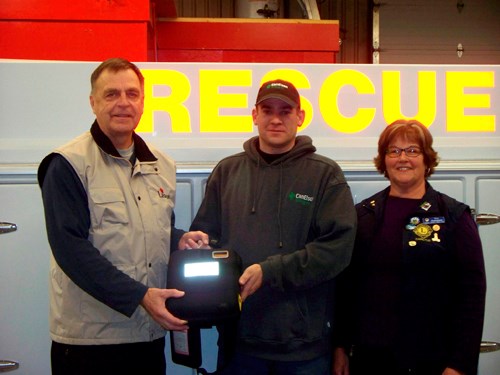After reading news about a hockey ref suffering from a cardiac arrest mid-game and being successfully revived with an automated external defibrillator (AED), Carlyle Legion member George Anderson was inspired to champion adoption of the life saving devices right here in Carlyle.
The Heart and Stroke Foundation defines an AED "as a machine that can monitor heart rhythms. It can tell if the heart has stopped beating effectively. If required, the machine can then deliver an electric shock to the heart. Most of the time, this shock will restart the heart." The machines can cost upwards of $2,500 per unit.
Awareness and adoption of AEDs is on the rise. Recently, the government of Manitoba announced that it will be installing up to 8,000 AEDs in public areas by Jan. 31, 2014.
"The bottom line is defibrillators save lives, and that's why this program is being rolled out," Premier Greg Selinger told reporters.
Over the past few years, there's been a few calls where the Carlyle Fire Department could have benefited from having an AED on hand, Anderson explained. The Carlyle FD is sometimes the first to respond to an emergency and must perform first-aid right away.
The Carlyle Legion and District Lions therefore decided to each chip-in and purchase an AED for the Carlyle FD.
Carlyle now has four AEDs in public areas, according to Anderson. The curling rink, golf course, hockey arena and now the Carlyle FD's mobile rescue unit each have one.
Although the machines require some maintenance and training, they're very user friendly and "why wouldn't you want the responsibility of saving a life," said Anderson. When combined with cardiopulmonary resuscitation-or CPR-AEDs can decrease the chances of a cardiac arrest significantly.




